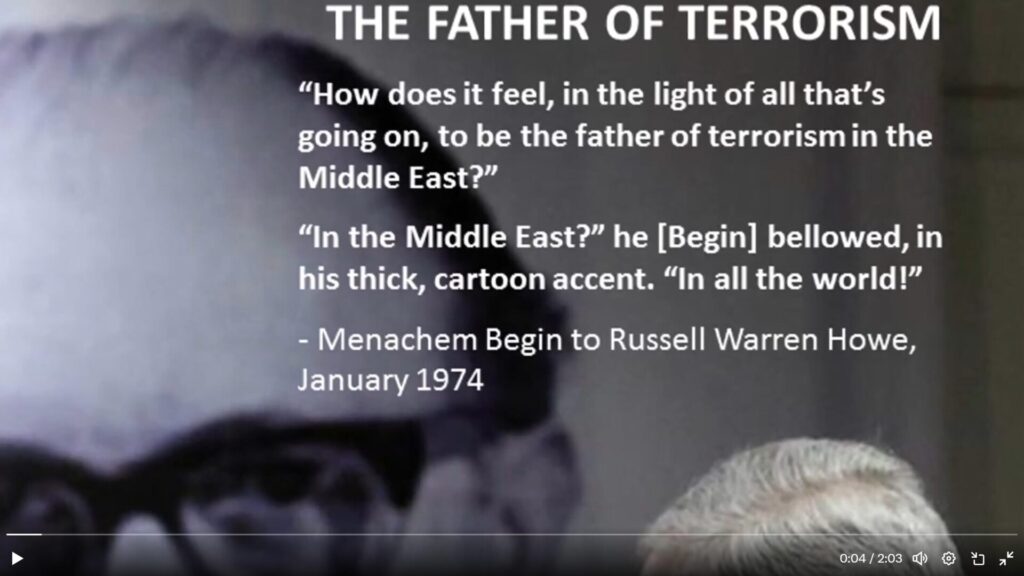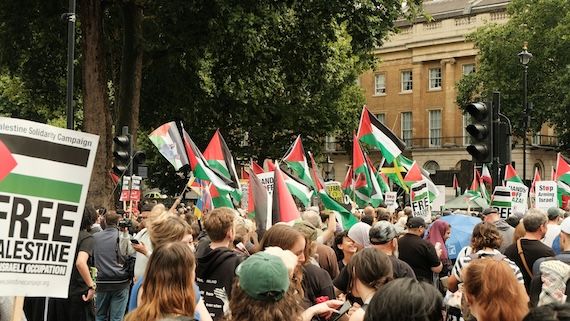At least 38 million people are displaced by US post 9/11 wars.

Creating Refugees: Displacement Caused by the United States’ Post-9/11 Wars by David Vine, Cala Coffman, Katalina Khoury, Madison Lovasz, Helen Bush, Rachael Leduc, and Jennifer Walkup August 19, 2021
The refugees are seeking safety in another country or being internally displaced within their own country as a result of the wars the US military and their Western allies have fought since 2001. That is more than those displaced by any war or disaster since the start of the 20th century, except for World War II. Although the United States has accepted hundreds of thousands of refugees, most have been hosted by countries in the greater Middle East.

This report uses recent data to update our 2020 calculation of the number of people displaced in the eight most violent wars the United States has waged since 2001, in Afghanistan, Iraq, Pakistan, Yemen, Somalia, the Philippines, Libya, and Syria. [Bergensia has added Sudan / South Sudan on the map since the US military stated Sudan as a “target” shortly after 9/11]
Using 2020 and 2021 data unavailable at the time of our initial report, this update conservatively estimates that at least 38 million people have fled their homes—around one million more displaced people than a year earlier. Our initial report was the first to comprehensively measure the number of people displaced in the wars the U.S. military has waged since President George W. Bush announced a “global war on terror” following Al Qaeda’s September 11, 2001 attacks. That report details a methodology for calculating wartime displacement, provides an overview of displacement in each war-affected country, and points to displacement’s individual and societal impacts.
Wartime displacement (alongside war deaths and injuries) must be central to any analysis of the post-9/11 wars and their consequences. Displacement also must be central to any consideration of the future use of military force by the United States or others. Ultimately, the figure of 38 million—and perhaps as many as 60 million—raises the question of who bears responsibility for repairing the damage inflicted on those displaced.
MAJOR FINDINGS
§ The U.S. post-9/11 wars have forcibly displaced at least 38 million people in and from Afghanistan, Iraq, Pakistan, Yemen, Somalia, the Philippines, Libya, and Syria. This exceeds those displaced by every war since 1900, except World War II.
The initial report (2020) is here: https://watson.brown.edu/costsofwar/files/cow/imce/papers/2020/Displacement_Vine et al_Costs of War 2020 09 08.pdf
We have updated our calculation with 2020 and some 2021 data from the sources used in our original report. We include the UN refugee agency UNHCR’s estimate of 270,000 displaced in Afghanistan from January to July 2021, which has been widely cited in the media. Our update also refines our calculation of displacement in Syria by including displacement only during the four months of 2014 when U.S. military personnel first became actively engaged in the Syrian civil war. Throughout our Syria calculations, we solely calculate displacement experienced in the five Syrian provinces where U.S. military personnel have fought and operated.
§ 38 million is a very conservative estimate. The total displaced by the U.S. post-9/11 wars could be closer to 49–60 million, which would rival World War II displacement.
§ 26.7 million people have returned after being displaced, although return does not erase the trauma of displacement or mean the displaced necessarily have returned to their original homes or a secure life. Children born in displacement who follow parents home are also among those counted as “returnees.”
§ Any number is limited in what it can convey about displacement’s damage. The people behind the numbers can be difficult to see, and numbers cannot communicate how it feels to lose one’s home, belongings, community, and much more. Displacement has caused incalculable harm to individuals, families, towns, cities, regions, and entire countries physically, socially, emotionally, and economically.
In 1995 Netanyahu wrote a book stating “militant Islamists” would bring down the World Trade Centre.
Almost like he planned it…
— ADAM (@AdameMedia) September 10, 2024

Building 7 and the owner who somehow ensured all the buildings that went down for ‘terror’ …
I found the video breakdown from 2006 of what possibly happened to building 7 where the owner, at the time of the 9/11 terror attack, Larry Silverstein, while interviewed on PBS documentary “America Rebuilds”, says how the emergency response team decided to demolish the building… pic.twitter.com/yJF0pN8fCJ
— Larry Smith (@bvilliebully) September 12, 2024
They wanted us to destabilize the Middle East, turn it upside down, now did anyone tell you that, was there a national dialog on this? Did senators and congressmen stand up and denounce this plan, was there a full fledged american debate on it? Absolutly not and there still is’nt.
(six weeks later back in Pentagon) . . .
Why havent we attacked Iraq? Are we still gonna attack Iraq? “It’s worse than that” he said that, he pulled of a piece of paper of his desk, “I just got this memo from the Secretary of Defence’ s Office it says we are gonna attack and destroy the governments of seven countries in five years, we are gonna start with Iraq, and then we’re gonna move to Syria, Lebanon, Libya, Somalia, Sudan and Iran.
– US Army General Wesley Clark
In September 2000, a whole year before 9/11, a document called “Rebuilding America’s Defenses” stated that “the process … of revolutionary change is likely to be a long one absent some catastrophic and catalyzing event like a new Pearl Harbor.” One year later, that event would arrive.
Long before September 11. and George W. Bush was elected, a small influential group wrote a manifesto. The document was effectively a charter of the project for a new American Century, a neoconservative think tank in Washington. The founding members included Donald Rumsfeld, Dick Cheney, Wolfowitz on the Defence Department, Richard Pearl, Head of the Defence Advisory Board, Luis Libby, Chief of Staff, John Bolton Undersecretary of State for Arms Control, Merill Colin on the Defence Policy Board.
Much of what these men wanted is coming through; they urged that the US abandon the Ballistic Missile Treaty, it has. They wanted the establishment of more permanent US military bases abroad, that happened in the Philippines and Georgia and will likely happen in Iraq, they urge regime change as a goal of foreign wars, not just in Iraq. They wanted the US as a global “constabulary.” They were unburdened by the UN or world opinion, preventing any challenge to US dominance, but they wrote a year before September 11. such aspirations are unlikely to be realized without “a catastrophic and catalyzing event… like a new Pearl Harbor.”
The reason they wanted 911 to happen 👇 pic.twitter.com/9DsyqKG8Zo
— Not A Number (@myhiddenvalue) September 12, 2024
The 5 dancing Israelis were among a total of 141 Israeli agents arrested and later released …
The reasons most of your political commentators don’t call these out is because they are either working for Israeli interests personally, or they are not allowed to call it out because of their producers.
— Uncommon Sense (@Uncommonsince76) September 13, 2024
I’ve attached the original news story from Fox News discussing the… pic.twitter.com/pyynr4GaXl
According to a U.S. intelligene agency, the government of country A (Israel) conducts the most agressive espionage operation against the U.S. of any U.S. ally.
Before you dismiss this as a far-fetched conspiracy theory, please consider spending an hour and a half following Christopher Bollyn’s presentation below. WARNING: You may need something stronger than lemonade in a glass to hold on to because this is disturbing.
🇮🇱 Solving 9/11, the Deception that Changed the World — Christopher Bollyn
— Keith Woods (@KeithWoodsYT) September 11, 2024
Israeli woman smiling during 9/11
“Now I hope people understand what we deal with on a daily basis” pic.twitter.com/ue8xQygJuK — Dr. Anastasia Maria Loupis (@DrLoupis) September 8, 2024
The Father of Terrorism
Menachem Begin, born in Brest, Poland (now Belarus) 1913 – 1992; before the creation of the state of Israel, he was the leader of the Zionist militant group Irgun, the Revisionist breakaway from the larger Jewish paramilitary organization Haganah. He proclaimed a revolt, on 1 February 1944, against the British mandatory government, which was opposed by the Jewish Agency. As head of the Irgun, he targeted the British in Palestine. Begin ordered an attack on the British military and administrative headquarters at the King David Hotel; 91 people were killed, following a request from the Haganah, although the Haganah’s permission was later rescinded. Begin founded Likud and he was the sixth PM of Israel 1977 – 1983 [preceded by Yitzhak Rabin and succeeded by Yitzhak Shamir].

Hollywood took it to next level though before 9/11 pic.twitter.com/2trTPjPy2V
— 🐝 🇵🇸🇮🇪🇿🇦🇪🇸🇳🇴🇧🇷🇨🇴🇳🇮🇨🇺🇸🇮 🇦🇲 (@AntiZionistB) September 9, 2024




2 Comments
Pingback: NATO's Article 5 was invoked for the first (and only) time ever by the United States After 9/11, - Bergensia
Pingback: 10 Institutions Accuse Israel of Genocide in Gaza - Bergensia